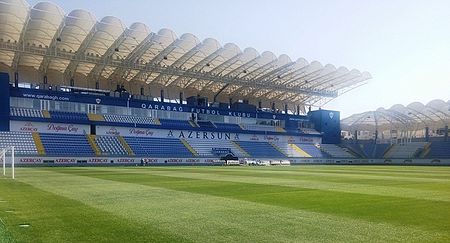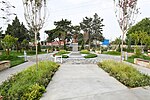Azersun Arena
Asian sports venue stubsAzerbaijani building and structure stubsAzerbaijani sport stubsAzerbaijani sports venue stubsFootball venues in Baku ... and 1 more
Multi-purpose stadiums in Azerbaijan

The Azersun Arena or Tofiq Ismayilov Stadium, also referred as Surakhani Stadium (Azerbaijani: Azərsun Arena) is a football stadium in Yeni Suraxanı, Baku, Azerbaijan, opened in June 2015. The main tenant of the stadium is Qarabağ, who moved from their home at the Tofiq Bahramov Stadium when it was completed.
Excerpt from the Wikipedia article Azersun Arena (License: CC BY-SA 3.0, Authors, Images).Azersun Arena
Tahir Bağırov küç., Surakhany Raion
Geographical coordinates (GPS) Address Nearby Places Show on map
Geographical coordinates (GPS)
| Latitude | Longitude |
|---|---|
| N 40.4212 ° | E 49.9968 ° |
Address
Azərsun Arena \ Suraxanı
Tahir Bağırov küç.
1049 Surakhany Raion
Baku Ekonomic Zone, Azerbaijan
Open on Google Maps








